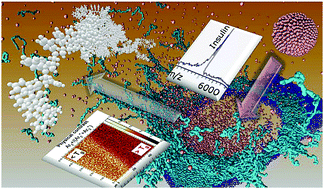Large cluster ions: soft local probes and tools for organic and bio surfaces
Abstract
Ionised cluster beams have been produced and employed for thin film deposition and surface processing for half a century. In the last two decades, kiloelectronvolt cluster ions have also proved to be outstanding for surface characterisation by secondary ion mass spectrometry (SIMS), because their sputter and ion yields are enhanced in a non-linear fashion with respect to monoatomic projectiles, with a resulting step change of sensitivity for analysis and imaging. In particular, large gas cluster ion beams, or GCIB, have now become a reference in organic surface and thin film analysis using SIMS and X-ray photoelectron spectroscopy (XPS). The reason is that they induce soft molecular desorption and offer the opportunity to conduct damageless depth-profiling and 3D molecular imaging of the most sensitive organic electronics and biological samples, with a nanoscale depth resolution. In line with these recent developments, the present review focuses on rather weakly-bound, light-element cluster ions, such as noble or other gas clusters, and water or alcohol nanodroplets (excluding clusters made of metals, inorganic salts or ionic liquids) and their interaction with surfaces (essentially, but not exclusively, organic). The scope of this article encompasses three aspects. The first one is the fundamentals of large cluster impacts with surfaces, using the wealth of information provided by molecular dynamics simulations and experimental observations. The second focus is on recent applications of large cluster ion beams in surface characterisation, including mass spectrometric analysis and 2D localisation of large molecules, molecular depth-profiling and 3D molecular imaging. Finally, the perspective explores cutting edge developments, involving (i) new types of clusters with a chemistry designed to enhance performance for mass spectrometry imaging, (ii) the use of cluster fragment ion backscattering to locally retrieve physical surface properties and (iii) the fabrication of new biosurface and thin film architectures, where large cluster ion beams are used as tools to transfer biomolecules in vacuo from a target reservoir to any collector substrate.

- This article is part of the themed collections: PCCP Perspectives and 2020 PCCP HOT Articles


 Please wait while we load your content...
Please wait while we load your content...